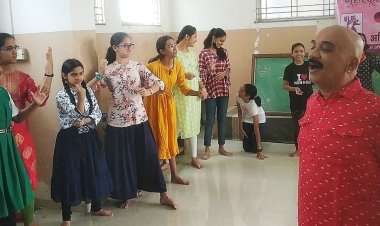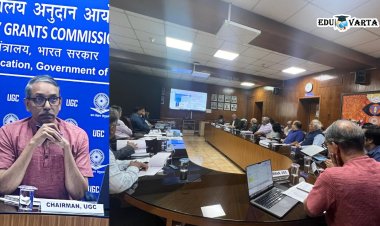NHEQF : Students to avail multiple entry and multiple exit
The framework intends to provide a nationally accepted and internationally comparable and acceptable qualifications framework to facilitate transparency and comparability of higher education qualifications at all levels.

EduVarta News Network
The NHEQF (National Higher Educational Qualification Framework) seeks to bring changes in the education system right from the school to the higher education levels. Under the NHEQF, the higher education qualifications such as a certificate, diploma and degree will be awarded based on the demonstrated achievement of learning outcomes and academic standards expected of graduates of a programme of study.
The framework intends to provide a nationally accepted and internationally comparable and acceptable qualifications framework to facilitate transparency and comparability of higher education qualifications at all levels. Recently The University Grants Commission (UGC) has finalised the NHEQF, another regulatory reform proposed by National Education Policy.
Also Read : CBSE 2024 Exam Pattern for 10, 12 Revised; These are the Changes…
The main aspects of NHEQF for higher education is, The NHEQF is characterised by six levels based on the complexity of learning outcomes. The levels start from 4.5, 5, 5.5, 6, 7 and 8. While the NHEQF level 4.5 represents learning outcomes appropriate to the first year (first two semesters) of the undergraduate programme of study, level 5 represents undergraduate diploma courses. Level 5.5 to 6 deals with bachelor’s degree, starting with the level 5.5 that covers the first three years of a four years undergraduate course followed by the fourth year with eight semesters completed by a student.
Similarly, level 6.5 covers a two-year masters degree programme after obtaining a three-year bachelor degree and a one-year masters degree programme after completing a four-year undergraduate programme which includes honours with research Level 7, on the other hand, covers master’s in engineering and M. Tech. of two years after obtaining a four-year B.Tech. degree while Level 8 represents learning outcomes appropriate to the doctoral-level programme of study. For these levels there are some credits given.
Also Read : CBSE Exam : Next year dates of 10th, 12th examination announced
A credit is a unit by which the coursework done by a student will be measured. For example, a three credit lecture course in a semester means three one-hour lectures per week with each one-hour lecture counted as one credit. Moreover, a “one credit” obtained from extra academic work like seminar or internship or studio activities or field projects or community engagement and service means two-hour engagement per week. Accordingly, in a semester of 15 weeks duration, a one credit in these courses is equivalent to 30 hours of engagement. To obtain a four year undergraduate programme, students will have to earn a minimum of 160 credits, with a minimum of 40 credits each at level 4.5, 5, 5.5, and 6 of the NHEQF. Each level also allows students to avail multiple entry and multiple exit.
For instance, to exit the undergraduate programme with a certificate will require 40 credits; with a diploma after two years will need 80 credits; degree after three years will have a requirement of 120 credits; degree with honours/research after four years with 160 credits. In order to pursue a one-year postgraduate diploma, a student must have a three year bachelor’s degree with a minimum of 40 credits. Meanwhile internship, studio activities, field work, community engagement and similar service count mean two-hour engagement per week.
Follow Us : https://chat.whatsapp.com/BKV1cdTvHMDAsv3o1G8AB2

 eduvarta@gmail.com
eduvarta@gmail.com 































